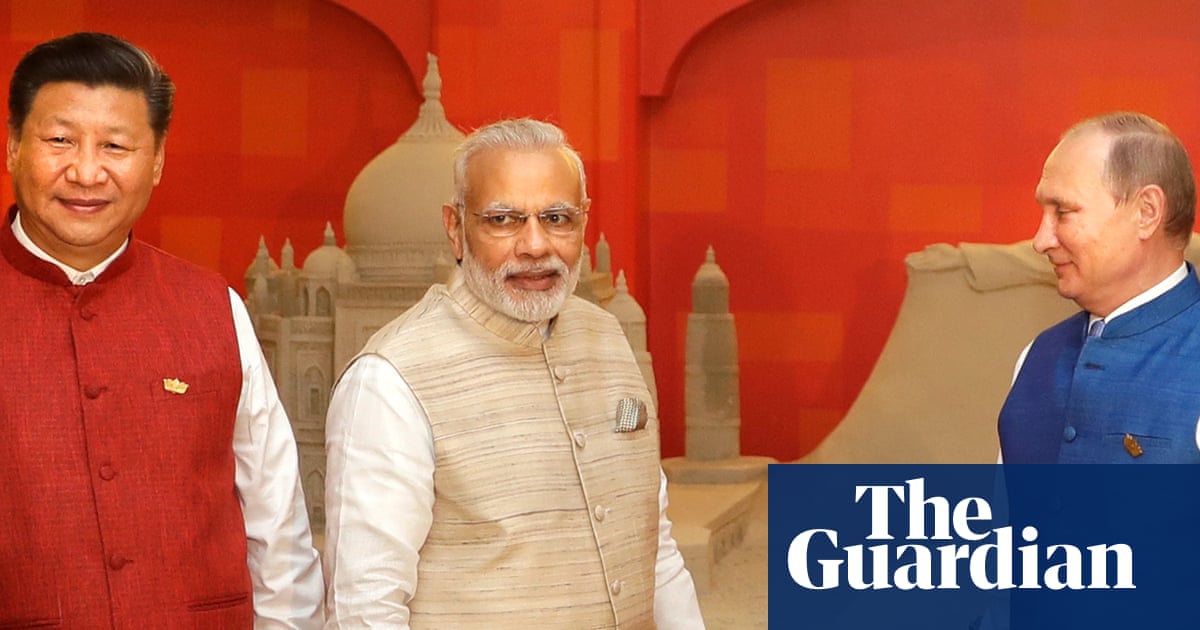Modi’s Strategic Visit to China Amidst Shifting Alliances
Indian Prime Minister Narendra Modi is gearing up for a significant trip to China this weekend, marking his first visit in seven years. This rendezvous is particularly momentous as it coincides with a gathering of world leaders, including Chinese President Xi Jinping and Russian President Vladimir Putin, at the Shanghai Cooperation Organisation (SCO) summit. The backdrop of this meeting is a notable shift in India’s foreign relations, particularly with the United States, following recent trade tensions.
The Context of Tension with the U.S.
The urgency of Modi’s visit arises from deteriorating relations between India and the United States, which were exacerbated when the U.S doubled tariffs on Indian exports to 50%. This economic backlash followed India’s steadfast commitment to purchasing Russian oil, which the U.S. argues is indirectly financing Moscow’s war in Ukraine. This trade spat has introduced complications in the previously nurtured cooperation between the two nations, built on a shared goal of countering China’s global ambitions.
Political analyst Michael Kugelman points out that the trust India placed in the U.S. has diminished significantly, leaving room for geopolitical realignment. Modi’s trip to China comes at a time when both India-China ties appear to be stabilizing, presenting a compelling political narrative.
Repercussions for India’s Foreign Policy
The repercussions of the U.S-India trade friction have prompted India to reevaluate its alliances and look for diversification in its trade partnerships. The ramifications of these tariff increases are profound, as the U.S. is currently India’s largest export market, valued at approximately $86.5 billion annually. With two-thirds of these goods now subjected to new tariffs, sectors like textiles and jewelry are poised to bear the brunt of the economic fallout.
As tensions simmer, Indian officials have made it clear that while they wish to maintain strong ties with the U.S., they also recognize the necessity of expanding their international relationships. This strategic pivot is crucial as it mitigates the perception of capitulation to U.S. pressures.
Opportunities with China and Russia
Amid these challenges with the U.S., Modi’s visit to China reflects a calculated maneuver to engage with both Beijing and Moscow. Experts suggest that China is keen to capitalize on the strained U.S.-India relationship, especially with rising trade tensions. The optics of Modi standing alongside Xi and Putin are undeniably powerful and send a clear message to Washington.
Moreover, Russia’s interest lies in reinforcing its bonds with India, positioning itself as a counterweight to Western influence in the region. Kugelman notes that this is an opportune moment for Russia to reaffirm its friendship with India as the latter looks towards diversifying its military and energy alliances.
Shifting Alliances and Regional Stability
The overall dynamic between India and China has shifted since 2020, following a violent clash along their disputed Himalayan border. Relations began thawing after Modi and Xi met during a BRICS summit in Russia. There seems to be a mutual understanding that both nations can explore avenues to enhance cooperation without fully resolving existing mistrust. The pursuit of a “new equilibrium” is indicative of a pragmatic approach from both sides, keenly aware of the ongoing global shifts.
Kewalramani, head of Indo-Pacific studies at the Takshashila Institution, emphasizes that while historical tensions could persist, there are practical benefits to finding common ground. This evolving relationship offers potential improvements in trade and investment that could stabilize an inherently complex geopolitical landscape.
India-Japan Relations as a Mitigating Factor
Before heading to China, Modi visited Japan for the annual India-Japan summit. This trip underscores India’s commitment to strengthening relationships in the Indo-Pacific region, particularly through defense and technology partnerships. With Japan poised to invest approximately $68 billion in India over the next decade, this alliance serves as a strategic buffer against U.S. trade pressures.
Japanese firms have shown interest in collaborating on various projects, including critical minerals, vital for high-tech industries. Modi’s emphasis on India and Japan being “partners made for each other” indicates a shift towards bolstering multiple alliances as a shield against shifting global dynamics.
Conclusion
As Modi embarks on this pivotal journey to China, the implications of his trip resonate far beyond bilateral discussions. Faced with the challenges of trade and geopolitical alignment, India is at a crucial crossroads. The upcoming meetings could lay the groundwork for a reconfigured international stance, balancing traditional partnerships with newer alliances. In an era marked by uncertainty, Modi’s maneuvering symbolizes a decisive step in crafting a resilient strategy for India, as it navigates an increasingly complex global landscape.

